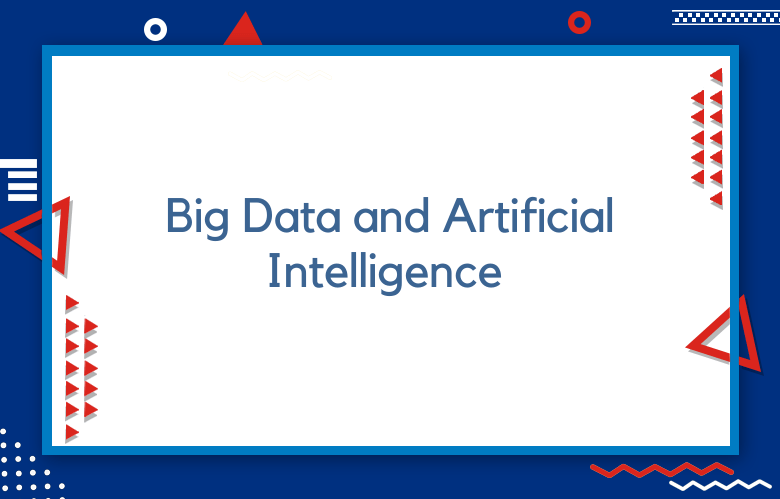Knowledge Representation for Digital Marketing

Knowledge representation, a fundamental concept in artificial intelligence (AI), is increasingly becoming a cornerstone of digital marketing strategies. In digital marketing, knowledge representation refers to the structured organization and modeling of information about consumers, products, and market trends to facilitate more effective decision-making and personalized experiences.
Knowledge Representation for Digital Marketing
By representing knowledge in a structured and actionable format, marketers can gain deeper insights, make informed decisions, and deliver more relevant and engaging content to their target audience.
In this exploration, we’ll delve into the role of knowledge representation in digital marketing and uncover how it’s reshaping the industry.
From customer segmentation and personalized marketing to predictive analytics and content optimization, knowledge representation empowers marketers to leverage data meaningfully and drive better results.
By organizing and modeling knowledge effectively, marketers can unlock new growth opportunities, enhance customer engagement, and stay ahead of the competition in today’s digital landscape.
So, if you’re ready to harness the power of knowledge representation in your digital marketing efforts, let’s explore how this transformative technology can help you achieve your marketing goals and drive success for your brand.
As digital marketing becomes increasingly competitive, businesses turn to artificial intelligence (AI) for innovative solutions to drive growth and engagement. One key aspect of AI that holds significant potential for marketers is knowledge representation—the process by which machines interpret and organize complex information.
By leveraging knowledge representation techniques, businesses can gain deeper insights into their audience, create more targeted campaigns, and optimize their marketing efforts for maximum impact.
The Power of Knowledge Graphs in Digital Marketing Strategies
Absolutely; here are some tips for leveraging the power of knowledge graphs in digital marketing strategies:
Data Integration
Integrate diverse data sources into your knowledge graph, including customer data, market trends, and product information. This creates a unified view of your ecosystem and allows for comprehensive analysis.
Semantic Enrichment
Use semantic technologies to enrich your data with contextual information and relationships. This enhances the depth and accuracy of your knowledge graph, enabling more nuanced insights.
Personalization
Leverage knowledge graphs to personalize marketing campaigns based on individual preferences, behaviors, and interactions. Understanding each customer’s context allows you to deliver targeted content and offers that resonate deeper.
Content Optimization
Utilize knowledge graphs to optimize content creation and distribution. By analyzing content attributes and audience preferences, you can tailor your content strategy to meet specific needs and preferences.
SEO Optimization
Enhance your search engine optimization (SEO) efforts by leveraging knowledge graphs to structure and annotate your content for better discoverability. Semantic markup and structured data can improve search engine rankings and increase visibility.
Predictive Analytics
Use knowledge graphs to power predictive analytics models that forecast future trends, customer behavior, and market dynamics. You can make informed decisions and anticipate opportunities by identifying patterns and correlations within your data.
Customer Journey Mapping
Use knowledge graphs to map the customer journey across multiple touchpoints. By understanding the interconnected pathways that lead to conversion, you can optimize the customer experience and drive engagement at each journey stage.
Campaign Optimization
Optimize real-time marketing campaigns by continuously updating and refining your knowledge graph with new data and insights. This iterative approach allows you to adapt strategies based on changing market conditions and customer preferences.
Cross-Sell and Upsell Opportunities
Identify and upsell opportunities by analyzing the relationships between products, customer preferences, and purchase history within your knowledge graph. This enables targeted marketing efforts that maximize revenue and customer satisfaction.
Leveraging the Semantic Web for Enhanced Knowledge Representation in Marketing
“Leveraging the Semantic Web for Enhanced Knowledge Representation in Marketing” marks a pivotal shift in how marketers perceive and utilize data in the digital age. This guide serves as a beacon for forward-thinking marketers, illuminating the semantic web’s semantic web’s transformative potential in reshaping knowledge representation and driving more effective marketing strategies.
The Semantic Web offers a revolutionary approach to organizing, structuring, and interpreting information in a landscape inundated with data. By imbuing data with context and meaning, this technology enables marketers to move beyond traditional data silos and unlock more profound insights into consumer behavior, preferences, and intent.
This guide is meticulously crafted for marketers, data scientists, and digital strategists eager to harness the power of the Semantic Web to revolutionize their marketing efforts. Through semantic technologies such as RDF (Resource Description Framework) and OWL (Web Ontology Language), marketers can create a unified, interconnected web of knowledge that facilitates more intelligent decision-making and personalized experiences for their audience.
From semantic search optimization and content categorization to predictive analytics and customer segmentation, the Semantic Web empowers marketers to transcend the limitations of traditional data analysis and unlock new avenues for innovation and growth.
Ontology Building: A Key to Effective Digital Marketing Knowledge Representation
In the intricate world of digital marketing, success hinges on understanding and connecting with your audience in meaningful ways. This is where ontology building emerges as a critical strategy for effective knowledge representation. Ontology building involves structuring and organizing information to capture the relationships and connections between different concepts, making it easier to interpret and utilize data effectively.
In digital marketing, ontology building enables marketers to create a structured framework for understanding customer behaviors, preferences, and interactions, ultimately leading to more targeted and personalized marketing efforts.
At its core, ontology building defines concepts and their relationships, often represented in a graph or taxonomy. This structured approach to knowledge representation allows marketers to categorize and organize data logically and coherently, making it easier to analyze and derive insights.
By building ontologies that capture their target audience’s key attributes and characteristics, marketers can better understand their customers and tailor their marketing strategies accordingly.
One of the primary benefits of ontology building in digital marketing is improved data integration and interoperability. By standardizing data representation across different systems and platforms, ontologies enable marketers to aggregate and analyze data from disparate sources more effectively more effectively. This holistic view of customer data allows marketers to identify patterns and trends that may not be apparent when data is siloed or fragmented.
Knowledge Representation Techniques for Personalized Marketing Campaigns
Personalized marketing campaigns rely heavily on accurately representing and utilizing customer data. Here are some knowledge representation techniques that can enhance personalized marketing campaigns:
Customer Profiling
Create detailed customer profiles that capture demographic information, preferences, behaviors, and past interactions with your brand. Use customer segmentation and clustering techniques to group customers with similar attributes or behaviors.
Semantic Web
Utilize semantic technologies like RDF (Resource Description Framework) and OWL (Web Ontology Language) to represent knowledge about customers, products, and marketing strategies in a structured and interconnected manner. This enables more nuanced analysis and personalization.
Collaborative Filtering
Implement collaborative filtering techniques to recommend products or content based on the preferences and behaviors of similar customers. This approach leverages the collective wisdom of the crowd to personalize recommendations.
Content-Based Filtering
Analyze the attributes of products or content (e.g., text, images, metadata) and match them to individual customers’ preferences. Content-based filtering techniques use machine learning algorithms to identify patterns and similarities between items and recommend the most relevant to each customer.
Hybrid Approaches
Combine multiple knowledge representation techniques, such as collaborative filtering and content-based filtering, to create hybrid recommendation systems that leverage the strengths of each approach. This can enhance the accuracy and effectiveness of personalized recommendations.
Contextual Information
Incorporate contextual information such as location, time, device, and browsing history into customer profiles to tailor marketing messages and offers to specific situations and preferences.
Predictive Analytics
Predictive analytics models can be used to anticipate future customer behavior and preferences based on historical data. Machine learning algorithms can analyze customer data patterns and trends to predict future interactions and outcomes.
Customer Journey Mapping
Map the customer journey across multiple touchpoints and channels, representing the sequence of interactions and the context of each interaction. This helps identify opportunities for personalized messaging and engagement at each journey stage.
Real-Time Data Integration
Integrate real-time data streams from various sources, such as website visits, social media interactions, and purchase transactions, into customer profiles to capture the latest information and enable timely personalized responses.
Enhancing SEO with Knowledge Representation: A Comprehensive Guide
In the ever-evolving realm of search engine optimization (SEO), staying ahead of the curve is essential for maximizing visibility and driving traffic to your website. One innovative approach gaining traction is leveraging knowledge representation, which uses and organizes data to capture relationships and connections between concepts.
Incorporating knowledge representation techniques into your SEO strategy can enhance your content’s relevance, depth, and effectiveness, ultimately improving your website’s ranking on search engine results pages (SERPs). This comprehensive guide will explore leveraging knowledge representation to elevate your SEO efforts and achieve better results.
Conclusion
Knowledge representation is a critical component of artificial intelligence that has profound implications for digital marketing. By enabling machines to process and understand complex information, knowledge representation empowers marketers to create more targeted, personalized, and practical strategies that resonate with their audience. As AI technology continues to evolve, the role of knowledge representation in digital marketing will only grow in importance.
Integrating knowledge representation techniques into your digital marketing approach can help you gain deeper insights into your audience, enhance campaign performance, and drive meaningful customer connections. By embracing this vital aspect of AI, you can stay ahead of the competition and achieve lasting success in the ever-changing digital landscape.



